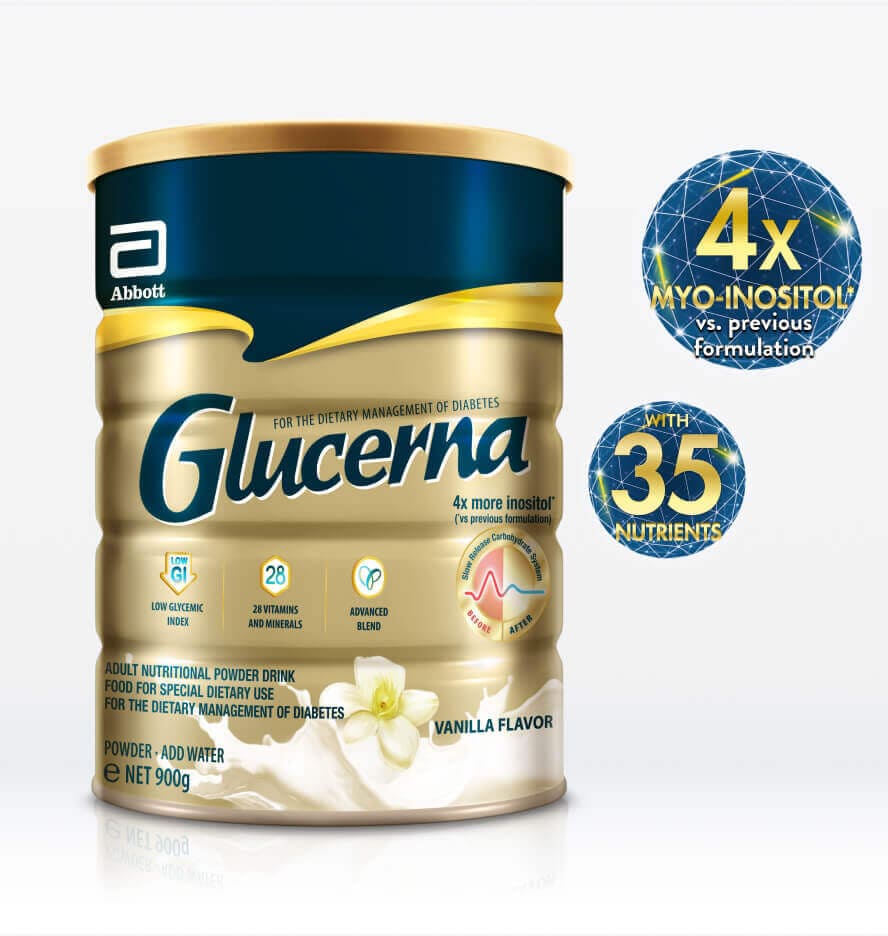Glucerna Vanilla Flavor
- Title
- Glucerna® Vanilla Flavor
- Detail Page Path
Check with your healthcare professionals before starting a new exercise program. You should do the same when you make significant changes to your workout habits.
People with diabetes may also be at increased risk of heart disease, especially those who haven't been exercising regularly1. Your healthcare team will be able to provide special guidelines for you to follow, to minimize the risk of heart problems.
Changes to a diabetes care plan may be needed to accommodate the exercise, such as taking fewer pills, adjusting your insulin dosage or meal plans.
Only make changes to your medications and other diabetes care after consulting your healthcare team. These professionals will determine if changes in oral medicine or insulin dose are needed and whether your daily food intake needs to be adjusted.
For those with diabetes, checking blood sugar levels before exercise is essential in an exercise routine2. During the first three weeks of a new exercise routine, it is recommended that you monitor blood glucose more frequently than normal.
Keep a log of glucose levels and share the changes with your healthcare team. To ensure that a diabetes logbook will provide the physician with enough information, record your blood sugar levels, insulin doses, blood-glucose-lowering medications, dosage frequency, stressful periods and dietary habits. These factors give the healthcare team a complete picture of how food and diabetes medications affect your blood sugar levels.
Lower blood sugar levels may occur as quickly as two days after beginning a new exercise plan, especially if you exercise vigorously. This is one of the benefits of exercise. At the same time, do watch out for symptoms of low blood sugar3, which is also called hypoglycemia. These signs include shakiness, dizziness, sweating, hunger, headache, pale skin color, sudden behavior changes, clumsy or jerky movements, confusion, and tingling sensations around the mouth.
People with diabetes often experience slow wound healing. If wounds are found on the feet, exercise should be temporarily stopped or modified.
Wearing socks and shoes that fit properly helps prevent these types of wounds. People diagnosed with diabetes are more prone to foot-related problems4, so extra care should always be taken for your footwear.
Before you start exercising, make sure you’re wearing shoes that fit well so that you’re less likely to injure yourself while exercising. Do pick the right shoes which are appropriate for the activity too.
When diabetes-related nerve damage affects the feet, it is difficult to feel blisters or sores. Therefore, people with neuropathy may be advised to choose activities less likely to cause blisters, such as walking, cycling, or swimming, instead of running or jogging.
Carry appropriate food, drink, or other carbohydrate sources to replenish your sugar levels if necessary. For instance, you could carry fruit juice, bananas, snack crackers, or a sports drink. In addition, stay hydrated by drinking plenty of fluids before, during, and after exercise.
1Health Promotion Board of Singapore. Retrieved on Aug 31, 2015 from: http://www.hpb.gov.sg/HOPPortal/dandc-article/680.
2WebMd. Retrieved on Aug 31, 2015 from: http://www.webmd.com/diabetes/guide/exercise-guidelines.
3WebMd. Retrieved on Aug 31, 2015 from: http://www.webmd.com/diabetes/features/diabetes-symptoms-to-never-ignore.
4Health Promotion Board of Singapore. Retrieved on Aug 31, 2015 from: http://www.hpb.gov.sg/HOPPortal/dandc-article/680.
Exercise helps make the body more sensitive to the action of insulin. Keep these six top tips in mind, and you'll soon be embracing an active and healthy lifestyle.
We know that exercise benefits everyone, including those with diabetes. So it’s worth making an effort to incorporate exercise into our daily life.
Delicious and nutricious recipes with the benefits of Glucerna®
Glucerna® is the number 1 selling diabetes nutritional supplement in the world*. It contains 35 nutrients, slow-release carbohydrates and 4x more inositol vs previous formulation, that delivers a dual action for tight blood sugar control.
* Euromonitor International Limited; total global retail sales in 2023 for diabetic diet enhancer drinks that are not marketed as a meal replacement product. Euromonitor and Abbott calculation based in part on custom research conducted between October and November 2023 and Euromonitor Passport Consumer Health 2023 based on 2022 data.

PH.2025.67670.GLU.1
You are about to exit for another Abbott country or region specific website.
Please be aware that the website you have requested is intended for the residents of a particular country or region, as noted on that site. As a result, the site may contain information on pharmaceuticals, medical devices and other products or uses of those products that are not approved in other countries or regions.
The website you have requested also may not be optimized for your specific screen size.
Do you wish to continue and exit this website?